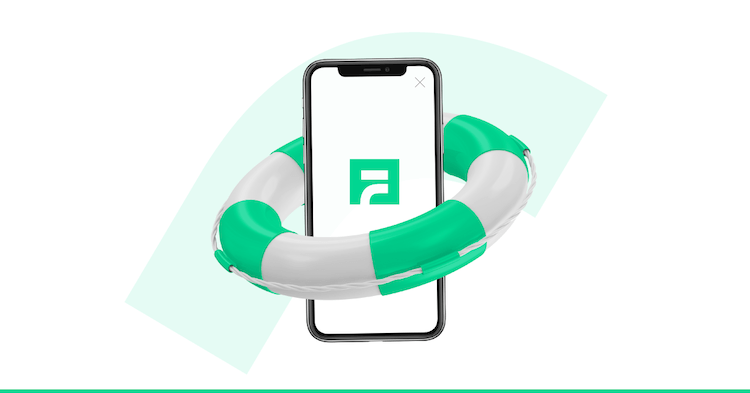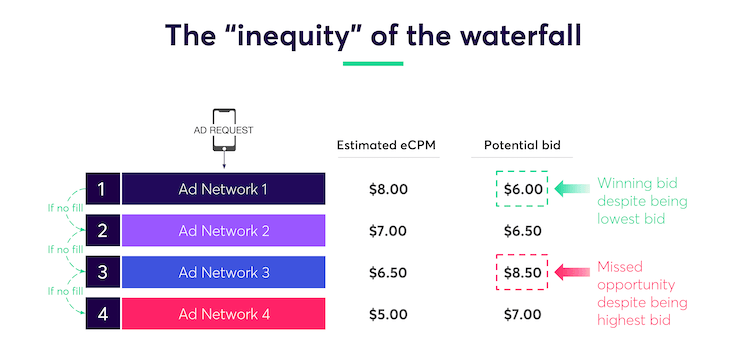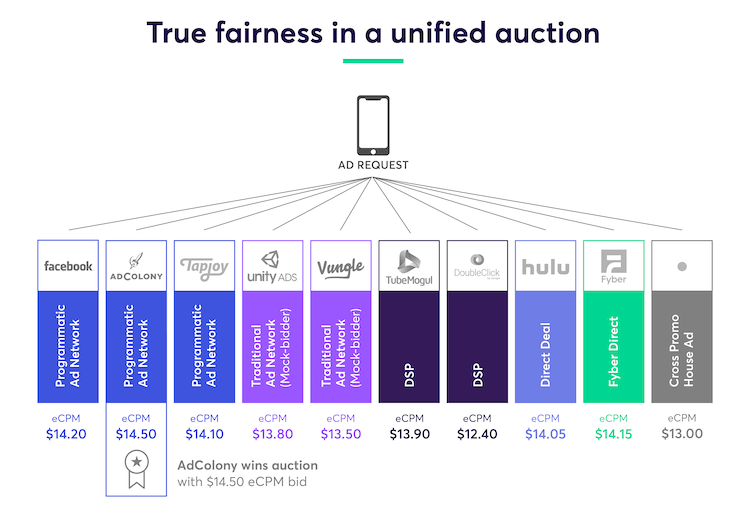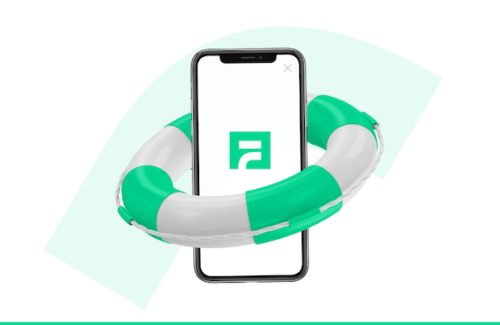App Аnnie reports that by 2020, in-app ad spend will top $201 billion. Clearly, marketers have stepped up to the plate and are ready to invest in this channel. Of course, it is in their best interest to do so, as apps are where prospects and customers spend most of their mobile time, and 57% of all digital time, according to comScore.
While mobile app publishers will certainly welcome your influx of cash, many still have their work cut out for them. Too many publishers still rely on waterfalls to fulfill their impressions, a setup that prevents advertisers from being able to compete for their ideal audience.
To earn that $201 billion, buyers need equal access to consumers using a mobile app the moment an impression becomes available. This is why we believe that brand advertisers are about to invest heavily in the channel and should advocate for true in-app header bidding. Let’s review why.
In-App Monetization is Largely Built Around Waterfalls
In-app publishers largely rely on waterfalls to monetize their inventory. A waterfall is the sequence in which buyers are offered the chance to buy an impression. A buyer’s position in the waterfall is based on historical bid data; if the bid was low for a particular user in the past (perhaps because the user wasn’t your ideal audience), you will be lower in the waterfall. And that, in turn, means you might not be able to compete for users you really do value, even if you’re willing to pay more than your historical bid average.
Moreover, to optimize their monetization strategies, app publishers often set up separate waterfalls for the various ad formats, ad placements and even geographies of their inventory. If you’ve never worked on the sell side, then let me assure you that managing even a single waterfall is tedious, time consuming, and far from real-time. At best, publishers can optimize their waterfalls once a day, but only if they have an army of ad ops personnel with time on their hands to do so.
Estimated eCPMs are based on historical data and market trends – bad predictor of future performance
Source: Fyber
Why is this important to advertisers? Well, if your bids for a user were lower in the past, it may take a long time for the publisher to get around to moving you up in the waterfall.
As an advertiser, you need more fluidity. Initial campaign criteria are merely a best guess of how the market will respond to your ads; programmatic allows you to switch tactics to focus on the users, channels, dayparts, and geos that deliver the best results. A waterfall won’t let you hone in on the best users of the moment if how you buy, or the tier on which you sit, doesn’t allow you to bid.
Header Bidding Offers Unified Auctions
In the desktop environment, header bidding has done a world of good for the buy side, because it allows all buyers – direct, RTB, network – to compete for impressions in an auction simultaneously. In unified auctions, price determines who the winner is (as it should).
Let’s say an impression meets all of the criteria of a direct sold campaign. In the pre-header bidder days, that impression would go to a direct sold campaign automatically. But what if that user had recently visited a luxury auto site? What if a retargeter was willing to pay a CPM that was higher than the direct sold campaign? As we can see, header bidding, with its simultaneous auctions among all buyer categories, is a huge benefit to that retargeter because now they have an equal chance to bid on that user and win, if offering the highest price.
All demand partners compete for every ad request, regardless of their integration type
Source: Fyber
As it stands today, can you expect that same level of equal access when purchasing in-app inventory? Sadly, no. Unified auctions are still not the reality.
CTV Growth Guide: A must-read for performance marketers
Whether you’re looking to boost brand awareness or drive user acquisition, this guide has you covered. Learn how to leverage CTV for both brand awareness and performance-driven campaigns and get actionable insights to optimize your strategies.
Download nowWhy Brand Marketers Should Advocate for True In-App Header Bidding
Although there are plenty of hybrid header-bidding solutions on the market, most are built around waterfalls and still exclude many advertisers, often those who buy via a mediated network. What we need is equal opportunity bidding, where any buyer, regardless of demand type, has the opportunity to compete for impressions simultaneously in a unified auction.
The shortcomings of non-unified auctions in header bidding is a battle that shouldn’t fall to publishers alone. As an advertiser, you should be just as riled. The waterfall and transparency shortcomings prevent you from securing impressions you need for your high-value campaigns to meet minimum frequency requirements and to promote optimal customer journeys through message sequencing. If you’re planning to open your wallet, you have every right to demand that your money be well spent.















